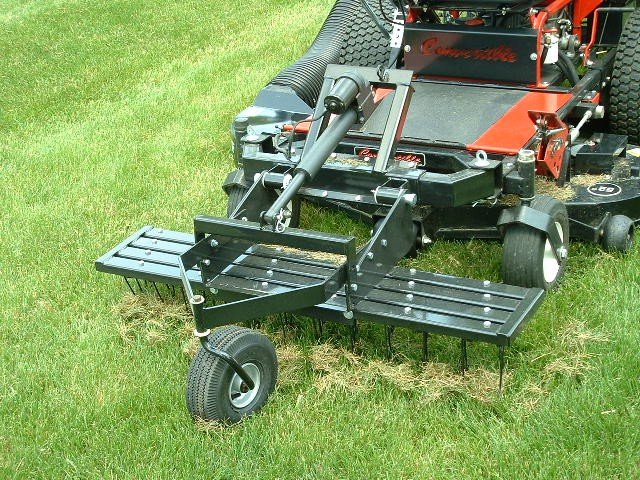Like most plants, grass has an above-ground shoot layer and an underground root system. Between these two is a layer of mainly dead turf-grass tissue called thatch. It comprises of stems, leaves, and roots, both alive and dead, and is a natural part of the turf growing process. It contributes to the health of the lawn by cushioning soil, reducing compaction, insulating grass crowns from temperature swings, and improving turf tolerance to mower and foot traffic.
However, once this layer grows thicker than ½ to ¾ of an inch, it starts becoming a problem. When the thatch layer grows too thick, it starts to diminish the health of the lawn. Some of the consequences of a thicker layer are:
- It blocks sufficient sunlight from reaching lower layers of grass.
- It captures too much moisture, which could act as a breeding ground for diseases.
- Forms a semi-impervious layer that prevents moisture, fertilizer, and pest and disease control from reaching the soil.
- It grows at a different thickness at different places, thereby making the lawn uneven.
Thatch is a natural component of lawn growth. But there are different factors that enable rapid growth and thicker layers. Turf types, such as St. Augustine grass, zoysia grass, and Bermuda grass, spread by above and underground stems and are prone to rapid thatch formation.
Additionally, over-watering, over-fertilizing with nitrogen, and mowing lawns too high, also contribute to greater thatch buildup.
How to Deal with Thatch
Once the dead turf-grass tissue builds up in the thatch layer, it then needs to be mechanically removed from the lawn. This is a process called dethatching. Dethatching is primarily done by two distinct methods, depending on how serious the problem is.
Core aeration
This is a mechanical process using a lawn aerator. This is a machine with hollow tines that remove plugs of cores of soil and thatch used to aerate the soil. The process reduces soil compaction and allows for the penetration of oxygen, water and nutrients into the lower layers. You could buy an aerator, rent it, or seek out assistance from a professional care provider.
Use a rake
This is an easy method for dethatching your soil, but only if the thatch buildup is relatively low. You could simply push the tines of the rake deep into the grass when you are cleaning up the lawn. A power rake is the preferred option, but any variety of rakes would be sufficiently effective.
Some Tips for When to Dethatch
The ideal time varies, depending on whether the grass is a warm or cool season variety, and when its strongest growth period occurs. St. Augustine grass, for example, is a warm season turf. Therefore, it should be dethatched in the late spring to early summer period.
Additionally:
- Dethatch when the soil is moist and not too dry.
- Preferably, dethatch during cooler weather.
- Before dethatching, mow the lawn to half its normal height.
- In the late to mid-fall time frame avoid heavy dethatching.

